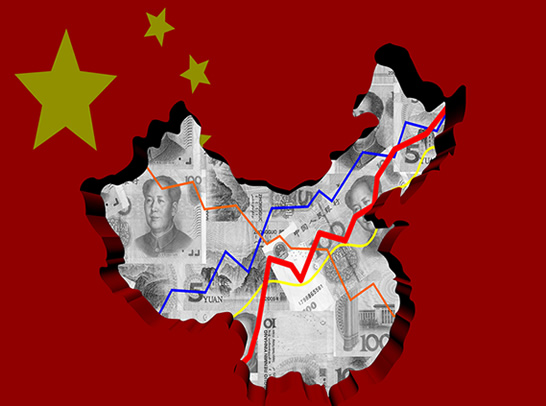Chinese Economy Peking in 2017

Trade data from China released this morning showed a strong uptick in the trade surplus as exports (and imports) surged in January.
Exports increased by 7.9% in January from -6.2% in December, Imports by a staggering 16.7% and the Surplus by $51.2bn from $40.7bn in December.
Such impressive data would have been expected to deflect concerns about another hard-landing for the Chinese economy, but not all analysts agreed.
“At first glance, it is tempting to conclude that the Chinese are back on track with the economic machine running at full speed," says Yann Quelenn market analyst for online lender Swissquote. "First of all, the weaker yuan had a massive effect on the trade valuation as in dollar term imports rose “only” by 16.7% (10% median forecast) and exports increased 7.9% compared to 3.2% expected and -6.2% in December".
"Secondly," notes Quelenn, "the Chinese New Year always clouds economic data in January and February, making it difficult for investors to draw meaningful conclusions on the development of the world’s second largest economy".
A Chinese Slowdown in 2017
If Swissquote’s Quelenn questions the data, analysts at Danske Bank see the economy, in general, starting to decline during 2017.
“Why do we look for China to slow in 2017? Mainly because the two engines that pulled China out of the doldrums in early 2016 are both expected to lose some steam. These engines are housing and infrastructure,” argues Danske Bank’s chief analysts Alain Von Mehren.
The slowdown in housing has been caused by a tightening in credit making it more expensive and more difficult to get a mortgage in China.
This is reflected in falling Home Sales data which should then feed through to slower construction in 3-6 month’s time. .
Infrastructure spending has steadily been declining in 2016 too.
The slowdown will not be steep or drastic, however, as the weak Chinese currency should act as a buffer by increasing exports, according to Von Mehren.
The threat of a trade war with the US remains a concern, however, as 20% of exports are to the US.
Although PMI models still look strong in the short-term Von Mehren says that special forecasting models called Macrobond models are forecasting a slowdown in 3-6 months’ time.
“It suggests the economic acceleration period will soon be behind us. This also tends to coincide with a peak in economic surprise indices, which are currently still at high levels – although they have started to come down,” says the Danske analyst.
When surprise indices are very high as now gains become increasingly unsustainable as past results are harder to beat.
There is, therefore, an increased possibility of a period of disappointments beginning.
As for inflation, Van Mehren sees this peaking in 2017 as the base effects from rising oil prices in 2016 wear off.
Only a further move higher in 2017 would offset the negative impact of lower oil prices on the inflation narrative.
“A peak in inflation, as well as a softer global cycle, will give some more support to core bond markets. We expect to continue to be in a consolidation period for bond yields until later this year when the outlook for higher US growth in 2018 based on a fiscal boost and ECB tapering speculation should give another leg up in bond yields,” says the Danske analyst.



